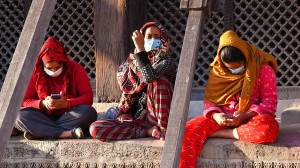Books
The women left behind by the revolution
In ‘War Through an Intersectional Lens’, Keshab Giri captures the voices of former Maoist fighters whose revolutionary dreams collided with hard realities.
Cp Aryal
The book begins with the story of two women who were a part of the Maoist Insurgency (1996-2006). First is Samata Pokharel, an upper-caste, educated woman who rose to leadership within the Maoist movement and now holds a political position. The second, Kamala BK, a Dalit woman from a rural area, has faded into obscurity, her revolutionary past forgotten, and her daily routine resumed.
About “revolution”? Kamala’s tone is half-mocking. “I am exactly where I was before the war, except for my age…I got married during the war, and I have a kid . . . I learnt to shoot so that I could cut vegetables in the kitchen now?...jaatibaad [casteism] is still very much alive in the society…I wish we had fought more so that we could have brought more rights to people like us.”
In ‘War Through An Intersectional Lens: Female Combatants and the Maoist Insurgency in Nepal’, author Keshab Giri doesn’t romanticise either story. He lets the contradictions speak. His interviews—thirty-nine in total—capture the full range of emotion: pride, grief, anger, confusion, hope, and exhaustion. He spent time with ex-combatants, experts, and party leaders, and his writing reflects the care and respect with which he approached their lives. He doesn’t reduce them to victims or warriors. They are people. Complicated, messy, honest.
“I learned to shoot so I could now cut vegetables in the kitchen?” This bitter, cutting question—posed by BK, a Dalit woman who fought for the Maoists—hits hard. The question pierces romantic tales of revolution.
According to the author, for ten years, Nepal’s Maoist insurgency promised nothing short of a new world; it marched on the slogans of equality, justice, and “aamul pariwartan”—radical transformation. And marching with it were thousands of women, many from poor, marginalised, caste-oppressed backgrounds. They walked into war with a hope that the gun would free them, not just from monarchy and feudalism, but from domestic drudgery, forced marriages, caste taboos, and everyday humiliation.
But when the war ended in 2006, many women were left standing at the edge of that promised world, peering into the familiar abyss of silence, rejection, and return.
Published by Oxford University Press, this book is not a dry academic text stuffed with jargon. It’s sharp, personal, and quietly angry. And it does something few books about war manage to do—listen.
If the battlefield was one front, love was another. During the war, the Maoist leadership encouraged “progressive relationships”—romantic partnerships built not on caste or parental arrangement, but on political commitment and emotional connection. Inter-caste marriages were seen as revolutionary acts. And many women embraced this freedom with enthusiasm. However, when the combatants landed in society, they had to interact more with the social forces. Thus, revolutionary rage had limits and possibilities, which I have highlighted in my PhD research on inter-caste marriages among Maoist combatants.
When the guns were lowered, families and communities returned with scorn. Dalit women who had married upper-caste men were abandoned. Ethnic women who had crossed caste lines to marry says, “My husband’s family disowned me because of my gender, caste, and ethnicity. Still, this hasn’t dented my determination to engage in the transformation of my society further.” The party, too, quietly stepped back. The leaders who once promised freedom now spoke of tradition, discipline, and social order. The revolution retreated. The patriarchy returned.
Giri shows this with nuance. These aren’t black-and-white betrayals. Sometimes the rejection came from within. Sometimes the men they loved changed. Sometimes it was poverty, or just the exhaustion of trying to build a life on ideals when the world around you still runs on hierarchy and shame.
What makes this book so powerful is that it doesn’t treat the war as something that ended in 2006. For many of the women Giri interviews, the war simply changed form. The bullets stopped, but the violence continued—this time in the form of stigma, silence, and survival.
Giri draws on the feminist idea of the “continuum of violence”—that the battlefield is only one part of the story. What about the marriage where a woman has no say? The family that disowns her? The society that calls her “spoiled” because she fought for something better? This idea isn’t new. Scholars like Cynthia Cockburn, Swati Parashar, and Srila Roy have contributed. But Giri gives flesh and blood to the women combatants from Nepal. You hear it in the voices of his interviewees. You feel it in their stories.
Giri is a male researcher writing about women’s lives. He’s frank about that and about the complicated power dynamics that come with it. He devotes a chapter to reflecting on his role, not to justify it but to show that research is never neutral. His positionality matters, but so does his proximity. He speaks the language. He understands the cultural codes. And perhaps most importantly, he listens more than he speaks.
His approach is deeply ethical. He doesn’t force neat conclusions or try to fit stories into boxes. He allows contradictions to breathe. He acknowledges that agency can look like protest—but also like compromise, survival, or even silence.
Giri’s book is not just about the Maoist women. It’s also about the movement itself. He questions the party’s narrative of gender emancipation and asks whether its promises were ever fully meant to be kept. He shows how, even in revolutionary spaces, caste and patriarchy find new forms. A party that preached equality still favoured educated, upper-caste voices. A movement that claimed to liberate women also asked them to sacrifice more, endure more, and expect less.
Giri employs the concept of the ‘matrix of domination’, initially developed by Kimberlé Crenshaw, to analyse the interlocking systems of race, class, and gender oppression faced by African American women in the US. Giri adapts this intersectional lens to feminist security studies, specifically to understand the complex experiences of women ex-combatants within Nepal’s Maoist insurgency and peacebuilding.
Using this framework allows Giri to capture the intricate diversity of these women's stories. He argues that their multiple identities (like gender, caste, ethnicity, political role) and subjective positions dynamically intersect across different times (during war, in post-conflict) and spaces (battlefield, community, peace process). This complex interplay, revealed by the matrix, fundamentally complicates simplistic or dominant narratives about their empowerment and agency.
The book focuses solely on Maoist women. We don’t hear from women who fought for other causes, or who resisted the war entirely. Including those voices could have offered a richer comparative picture. But perhaps that’s a task for another writer.
Giri’s tight focus is his strength. He gives space to women who were once central to the revolution—and are now rarely heard.
This isn’t just a book for academics. It’s a book for anyone who wants to understand what war does to people—not just in the heat of battle, but in the long, quiet years that follow.
In a country where “post-conflict” often feels like a bureaucratic label rather than a lived reality, War through an Intersectional Lens is a necessary reckoning. It reminds us that revolutions don’t always fail because of enemies. Sometimes they fail because they forget the people who carried them.
The book also asks a deeper question: What does freedom look like for a woman who gave everything to a cause, only to find herself back where she started—or worse? What happens when the slogans fade, the leaders move on, and the comrades are gone?
For BK, the answer is bitter. For Pokharel, it’s complicated. For others, it’s somewhere in between.
But for Giri and readers willing to listen, the answer is clear: we owe these women more than footnotes. We owe them our attention, our accountability, and, perhaps, a second revolution—this time, one that doesn’t leave them behind.
War Through An Intersectional Lens
Author: Keshab Giri
Publisher: Oxford University Press
Year: 2025




 14.12°C Kathmandu
14.12°C Kathmandu
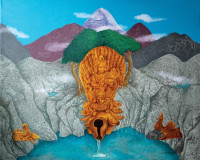
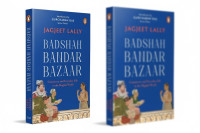

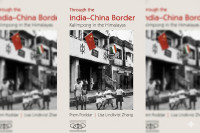
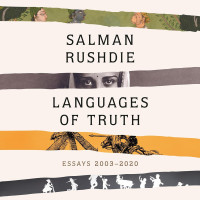



%20(1).jpg&w=300&height=200)

